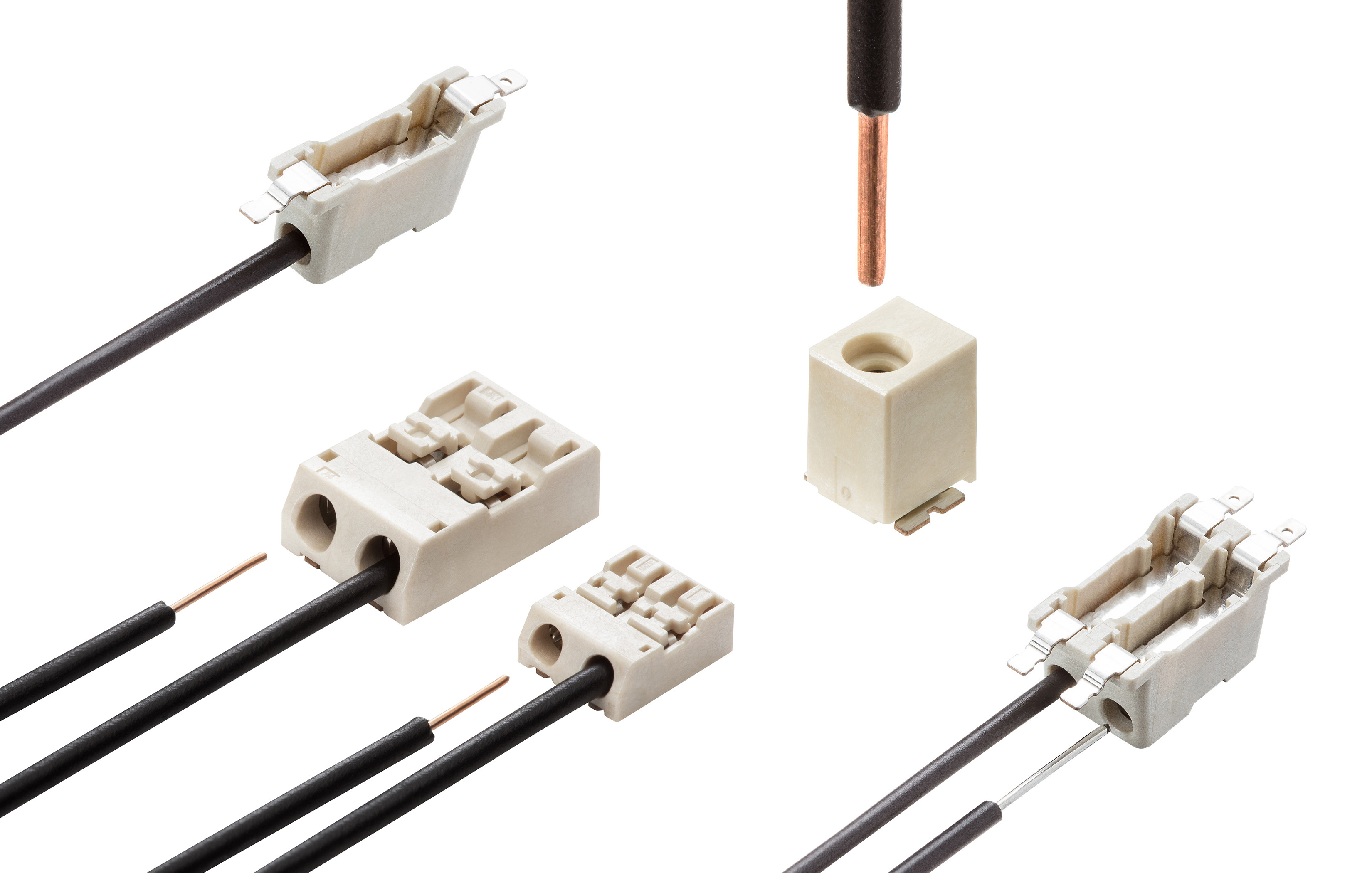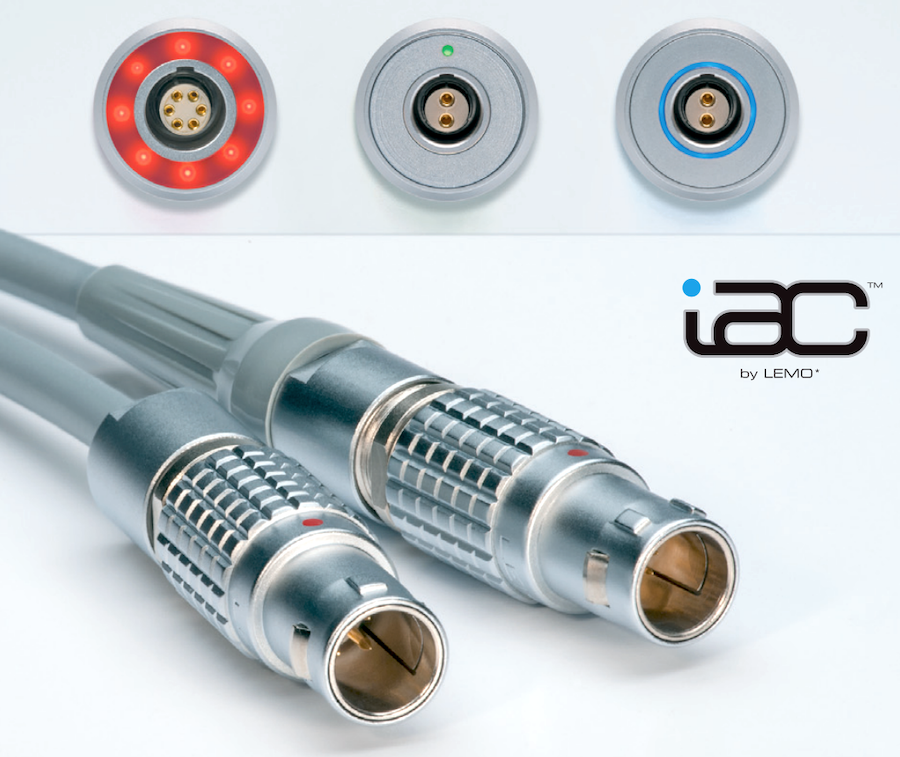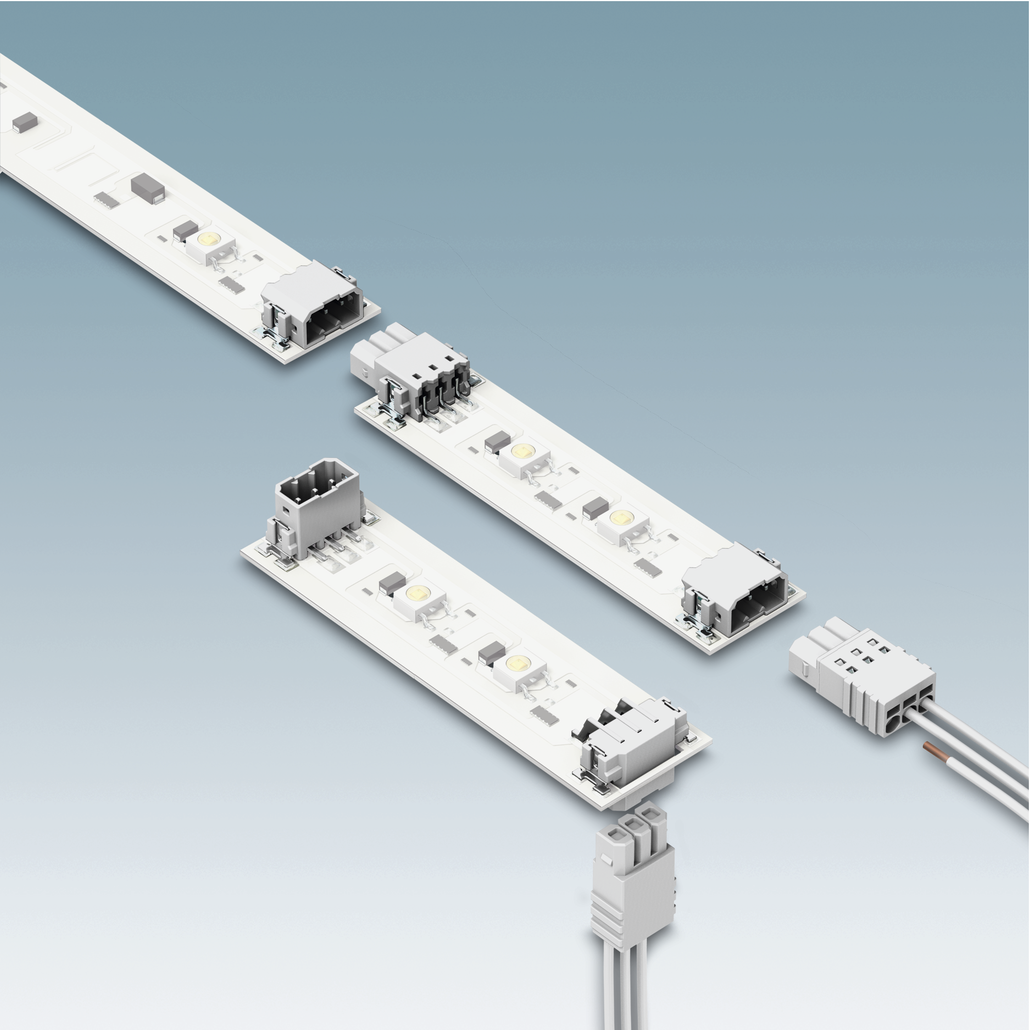LEDs Illuminate the Industrial Internet of Things
Industry 4.0 is coming to life with the help of LED connectivity.
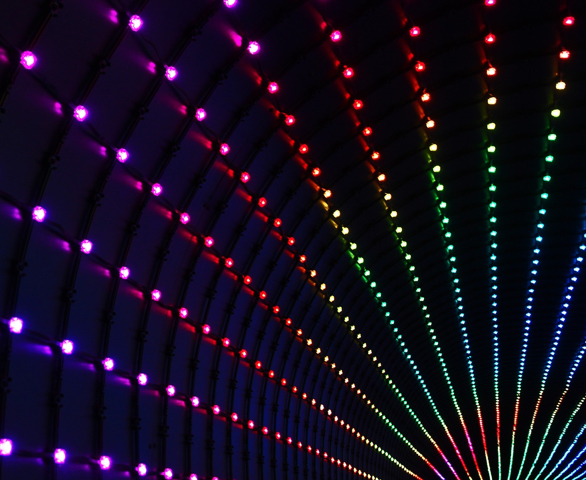
In the past decade, the commercial and residential lighting markets have undergone a rapid shift from incandescent and fluorescent light bulbs to light-emitting diodes (LEDs). In 2018, global LED sales accounted for 40% of the lighting market, according to the International Energy Agency, rising from a market share of just 5% in 2013. Costs have fallen dramatically while performance and lighting options have improved. LED products, which consume up to 75% less energy than other options, have helped companies and households save billions of dollars in energy costs. The US Department of Energy estimates that widespread adoption of LEDs could save $30 billion by 2027. An EU directive phased out halogen bulbs in 2018. A 2016 analysis by Goldman Sachs said, “The rapid adoption of LEDs in lighting marks one of the fastest technology shifts in human history.”
The rise of the LED perfectly coincides with the next industrial revolution. As the Industrial Internet of Things (IIoT), or Industry 4.0, automates manufacturing and supply chain functions, this highly efficient lightning technology can be integrated into systems for greater control, data collection, and cost savings. Connector suppliers are rapidly developing new products that can integrate LEDs into smart lighting fixtures and business strategies.
“LED modules secure the highest cost share of LED lamps,” said MyungGyu Kim, Molex Power & Signal global product manager. “Therefore, most efforts to reduce costs have been concentrated on the modules, which includes connectors. Typically, contact terminals would be the last solution to reduce connector cost. However, major global LED connector suppliers have been improving manufacturing processes, finding cheaper material and creating solutions for easier maintenance to deliver a more economical product.”
Changes to connector design have helped facilitate the rise of LEDs. One simple detail: Most LED connectors are made in white so they do not show up inside a light fixture. Other variations enable flexible light arrays. “Due to orientation of LED strips, more variations of connector designs have evolved, such as through-board, board-to-board, wire-to-board, board-to-board, and other configurations that allow boards to be connected end-to-end in a continuous strip,” said James Dunbar, product marketing manager for printed circuit board connectors at Phoenix Contact. “The size of connectors is always a concern and as a result, most LED lighting connectors have been reduced in size, with many connectors now no larger than 5mm in height. This allows them to be used in tight spaces, like in LED retrofits.”
As LED manufacturing processes have improved and costs come down, more manufacturing facilities can quickly find efficiencies and recoup costs by integrating this technology into their production strategies.
Smart LEDs for Smart Factories
Smart LEDs can help provide physical security to facilities and equipment. They can be paired with motion detection hardware and camera systems to communicate the presence of individuals in secured areas. They can also secure the integrity of equipment by alerting users to functionality issues or power losses. LEMO’s Halo LED push-pull connector employs a chip that provides additional equipment security and diagnostics information. In mission-critical settings, such as medical or military installations, these connectors can quickly provide users with information that prompts visual or automated reviews. They also feature their own LED indicator light arrays, which provide visual affirmation of secure connections. Product designs can program the red/green/blue (RGB) LED light array to offer diagnostic information via colored lights or light patterns.
Connectors used in LED applications may carry UL and CSA approvals, and those destined for industrial applications may also be rated up to IP69K. A UL94 rating may be desirable for environments where flammability may be a concern. Phoenix Contact offers a range of specialty lighting connectors that can handle currents up to 35A and 690V. These connectors are designed for quick, secure installation to facilitate both easy initial setups and future repairs or upgrades and can be used either for DIN rail mounting or for installation directly into wall-mounted fixtures.
In smart building networks, dimmable LED lights can adjust to changing natural light conditions, saving energy costs in lighting as well as in heating and cooling, as the LED fixtures themselves generate heat, albeit less than other lamp options. In horticulture facilities, LED lights can be adjusted by intensity and duration to facilitate the growing cycles of crops.
They can also achieve more transformative goals. LEDs can help gather data used to manage building controls, monitor production processes, and measure and control energy use. They have become part of a complex network of devices that interface with sensors and antennas to transmit data to mesh networks. They can also help usher in the use of machine learning processes in manufacturing.
“Within the realm of Industry 4.0, there is the practical possibility to have lights-out manufacturing due to the lack of human involvement in the manufacturing process. This precludes the need for general lighting; however, the process still needs to see what is going on, and that is done through machine vision. Most of the machine vision illumination in use today is done with LEDs and LED arrays. This means that many of the smaller, board-level interconnects developed for LED arrays in general illumination are equally applicable to machine vision illumination,” said Ronald Weber, industry manager of lighting at TE Connectivity. “Our inverted mini CT connector, our surface-mount poke-in contacts, and our releasable modular SMT poke-ins, as well as some of our harsh-duty lighting connectors, like our Mini Slim Seal, are all applicable to machine vision lighting. Of course, even the ubiquitous M8/M12 industrial connector we offer for sensor use is used to provide power and control to machine lighting systems.”
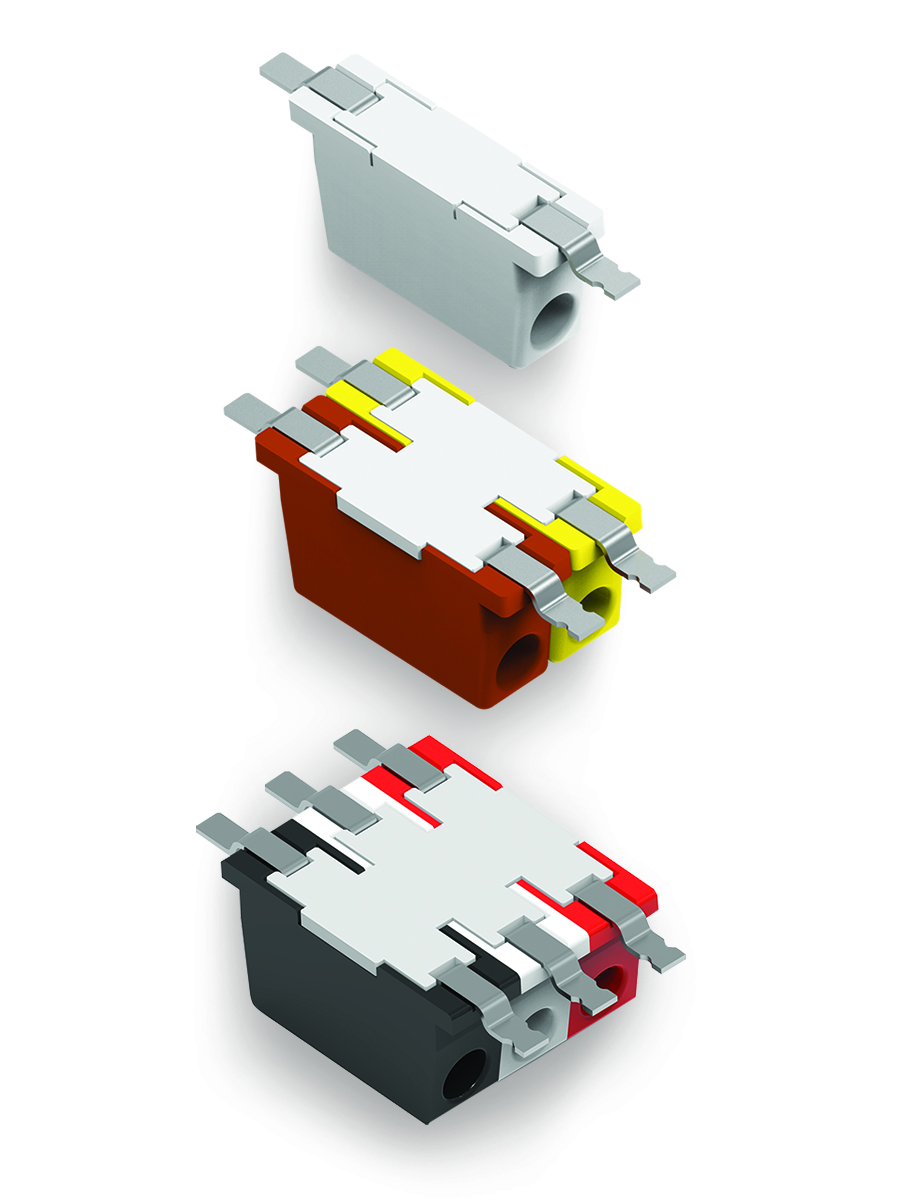
TE Connectivity’s BUCHANAN WireMate connectors are ideal for LED lighting.
Weber says that LEDs can also serve smart factories in stack lights and various beacons that provide alerts on faults in the product or process. “Even though machinery is heavily automated, things do go wrong, and when it does, there is a digital alert that goes out [indicating] that a fault occurred, as well as a visual alert. Visual alerts are done using a beacon or stack light to direct humans to the machinery exhibiting the fault. Most of these stack lights are now LED-based and the LEDs and LED arrays used in these products can utilize the same lighting interconnects I mention above for machine vision lighting.”
Many of the connectors in use for LEDs were designed specifically for lighting applications while others were originally designed for very different applications and have been adapted for use in lighting applications. “Not too long ago, I saw a micro 1.2mm connector originally developed for consumer hand-held devices that was used to provide power to an LED strip. The customer indicated he needed a very small, extremely low-profile connector and our account executive recommended this product since it would meet his needs even though it wasn’t classified as a lighting connector.”
As this versatile, powerful lighting technology comes into its own, connector products will no doubt continue to evolve — and adapt — to serve the industrial market and support the continued growth of Industry 4.0.
Like this article? Check out our other New Technology, Industry 4.0, and 2019 articles, and our Industrial Market Page.
- Where in the World is Amphenol LTW’s Luc Kan? - April 23, 2024
- TE Connectivity’s Sustainability Efforts Pay Off - April 23, 2024
- What is a VGA Connector? - April 23, 2024
